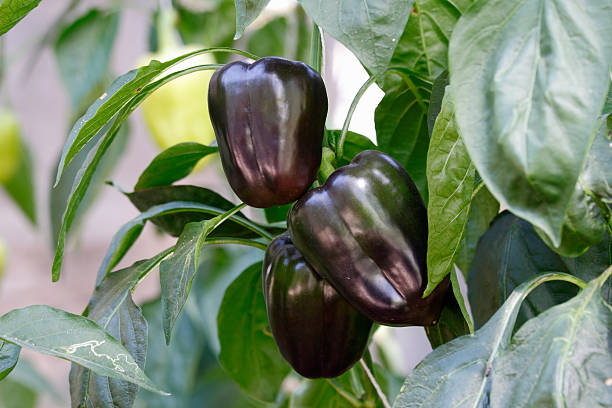 More recently, purple pepper was a curiosity for our compatriots. Now the situation has changed dramatically and gardeners are actively experimenting with different varieties of pepper, an unusual color. Which are interesting not only in color, but also in the unique features of agricultural technology.
More recently, purple pepper was a curiosity for our compatriots. Now the situation has changed dramatically and gardeners are actively experimenting with different varieties of pepper, an unusual color. Which are interesting not only in color, but also in the unique features of agricultural technology.
To date, not as many exotic varieties of pepper are known as, probably, we would like. Consider the most interesting options. And also we will analyze the basic rules for growing a plant.
Content
Description and characteristics of purple pepper
The bush, depending on the variety, can be different in branching, leafy and habitus. Also with fruits, peppers are small and large, thin-walled and fleshy, their shape is diverse. The color of the vegetable varies from light lilac to deep dark purple.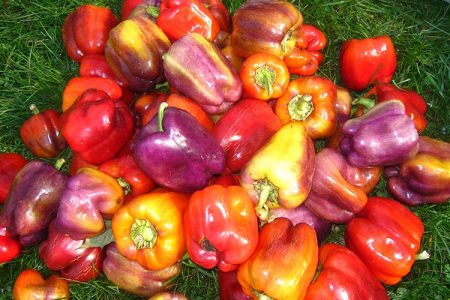
The unusual, beautiful color of the fruit is due to the increased content of anthocyanins in them. Violet is present in absolutely all cultures, but it is invisible due to too little concentration. A high percentage of the substance makes the plant not only exotic in appearance, but also increases its immunity to low temperatures, which is especially important for heat-loving peppers.
Vegetables enriched with anthocyanins are able to quickly absorb the energy of the sun and convert it into heat. Thus, purple peppers become much more enduring than red, white, green or yellow varieties, which means that they can perfectly develop even in the northern regions.
The properties
Anthocyanins do not form and do not accumulate in the human body, they must come from food. The daily norm for a healthy person is 200 mg of substances, and for a patient about 300 mg. What is the use of anthocyanins for the human body:
- strengthening the walls of blood vessels, including the retina;
- substances are able to quickly destroy all pathogenic bacteria. With colds, the daily norm of anthocyanins is increased by 1, 5 or even 2 times;
- decrease in intraocular pressure.
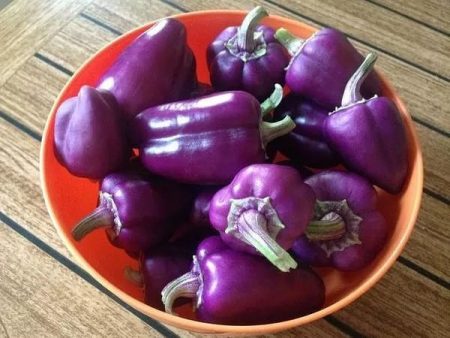
Regular consumption of vegetables with a high content of anthocyanins is a guarantee of good health and good vision. Growing unusual varieties of our usual culture is not only an interesting experiment, but also taking care of our own health.
Purple peppers are universal in use, summer salads are prepared from them, they are very beautiful in vegetable slices. Also, fruits can be canned, stuffed, stewed, added to soups and other dishes. But it is worth noting that during heat treatment, the purple tint is lost, but the taste and vitamins do not disappear.
Varieties of purple pepper
All varieties of purple pepper differ not only in the habit of the bush, the shape and weight of the fruit. They have different ripening periods and yield indicators. It is difficult to say unequivocally which of the varieties is the most attractive, because each gardener has his own preferences and wishes. We will describe the most popular options tested by time.
Maksim
A hybrid of medium early ripening, the first peppers are removed approximately 110 days after seed germination. The height of the bush does not exceed 60 cm, it is very neat. Fruits are thick-walled, drooping, conical in shape, pointed, weighing up to 130 grams, cherry-purple. The pulp is dense, juicy and incredibly tasty.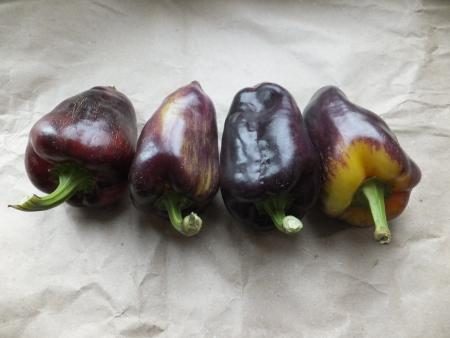
About 9 peppers are tied on one bush, they ripen together, from an average meter they collect up to 6, and sometimes up to 8 kilograms of fruit per square meter. The hybrid is resistant to heat and all diseases of the culture. Bushes can be planted in open and closed ground.
Othello
Early ripe hybrid of purple pepper. Resistance to viruses, fungi and negative weather factors is excellent. The bush is semi-spreading, compact not exceeding 90 cm, requires formation (removal of lateral shoots).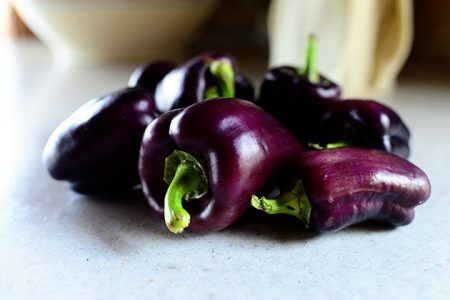
Peppers are thick-walled, conical, brownish-purple from 90 to 120 grams. The skin is smooth, the flesh is delicious and very aromatic. The ripening is friendly, the maximum yield per square meter ranges from 7-8 kilograms.
Purple Haze
Hybrid, ripening in the early period (130 days before harvest). The bush is not higher than 80 cm, neat, leafy average. Lilac fog is not afraid of a slight temperature difference, it is undemanding to growing conditions.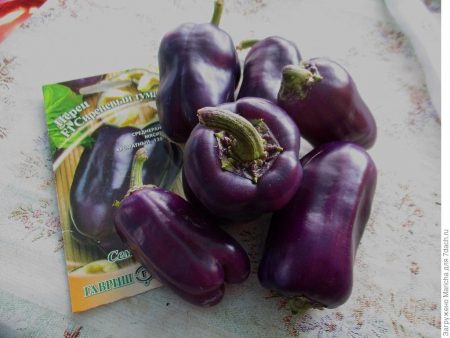
The fruits are thick-walled, pyramidal, truncated, red-violet, the maximum weight of one pepper is about 160 grams. Taste is excellent. If you take good care of this hybrid, it will delight you with an incredibly high yield, namely about 2, 5, or even 3 kilograms per plant.
Amethyst
Mid-early variety. Immunity to lowering the temperature is excellent, to diseases above the average. Amethyst can be planted in heated and simple greenhouses, as well as on the street. The plant is medium in size, low, neat and compact.
The peppers are sweet with a pleasant, very delicate aroma, they are thick-walled weighing from 100 to 230 grams trunk-shaped, red-violet. Fruits are characterized by excellent keeping quality. With proper cultivation, yield indicators are very high - up to 12 kilograms per square meter.
Oh yeah
Super-yielding, early ripe variety, the first crop is ready for harvest 120 days after the friendly germination of seeds. The plant is neat, not higher than 60 cm. Resistance to various negative factors at a high level. Peppers are thick-walled, juicy and tasty, oval-cone-shaped, violet-brown weighing up to 250 grams.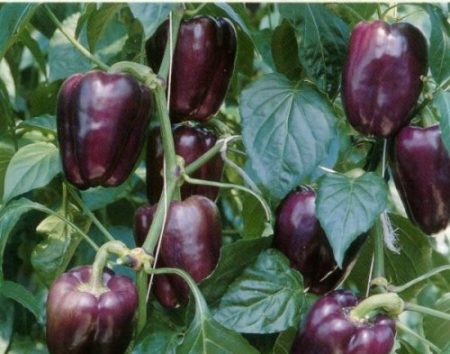
East star purple
A hybrid of the mid-early ripening period, undemanding, difficulties rarely arise with it. The bush is medium-sized, the fruits are cuboid with thick walls (up to 1 cm), purple-red, their weight does not exceed 210 grams. The taste is neutral, it does not have bitterness and excessive sweetness. In favorable years, about 6.5 kilograms of the crop is harvested per square meter.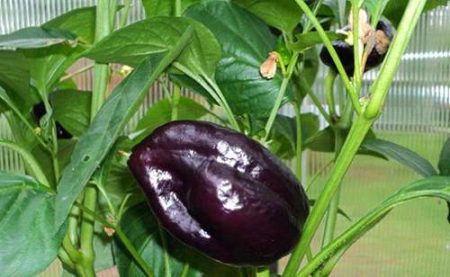
Arap
Early ripe hybrid with excellent immunity to viruses, fungi, heat and cold. The plant is tall, shtambovy, half-spreading requires formation and reliable support. The productivity indicators of Arap pepper are at a high level. In good years, about 6.5 kilograms can be removed per square meter, and this is an average indicator.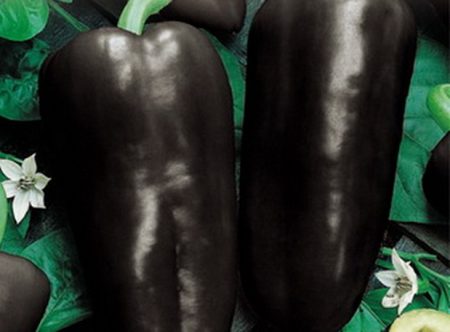
The peppers are beautiful, uniform, thick-walled, conical, pointed, weighing from 100 to 200 grams. The color of the fruit is very beautiful - rich red with a purple tint. The skin is glossy, dense. Taste is excellent.
Altai Chameleon
An attractive variety of purple pepper ripening very early. It can be planted anywhere, whether it is a greenhouse or unprotected soil. The bush is semi-spreading, medium-sized. Resistance to all kinds of ailments is excellent, Altai chameleon is not afraid of cold and heat.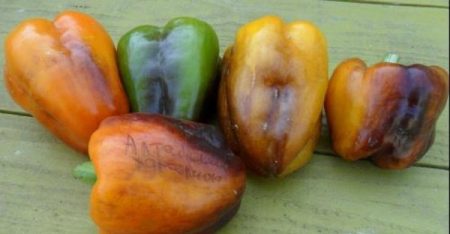
The peppers are thick-walled cone-shaped; when fully ripened, they are painted in a very beautiful dark red color with a slight purple hue. The weight of the fruit is about 100 grams. The maximum number of peppers collected from one square meter, with good and proper care, can be 8, 5, or even 9 kilograms.
Blot
Another good variety that ripens in the medium for the culture period.Immunity to cold, heat, drought, pests and common diseases of peppers is good. Blot is grown without any shelter and in protected ground.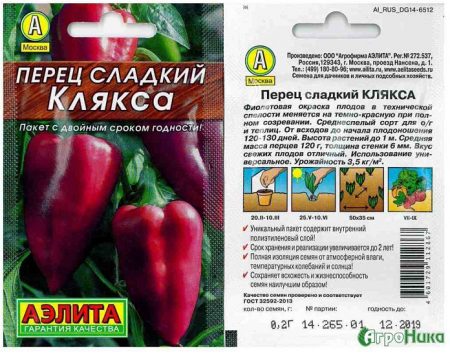
The bush is medium in height, semi-spreading, compact. The fruits are thick-walled, juicy with a memorable taste and aroma, there will be no one indifferent to this variety. They are conical in shape, red-violet color, maximum fruit weight 150 grams. In good years, up to 4 kilograms of beautiful, even peppers are collected per square meter.
Lilac Lavender
Translated from English - a purple masterpiece. Super-yielding, mid-early variety. The bushes are slightly higher than half a meter, massive, but it is easy to care for them. Immunity to all negative factors is good, the variety can be grown in the open and in closed ground. Seeds are a rarity.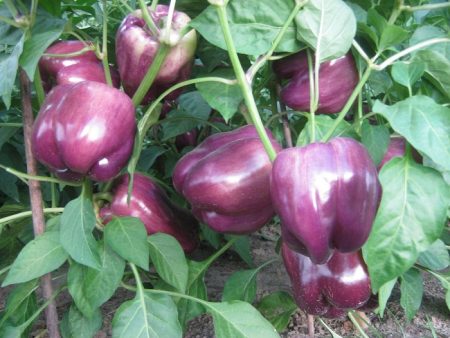
The fruits are juicy, beautiful, cone-shaped, thick-walled, sweet and incredibly fragrant, slightly spicy notes are present. The color of peppers is burgundy red with a purple hue, their weight is 300-400 grams.
Purple bell
The fruits of this violet-fruit variety ripen on average (130 days). Immunity to insignificant changes in day and night temperatures, as well as to pepper diseases is excellent. The bush is medium-sized, sprawling.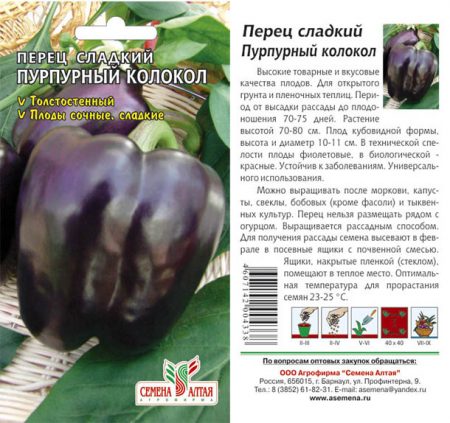
The fruits are tasty and aromatic, cuboid, thick-walled, red-violet weighing from 120 to 200 grams. On average, the yield per square meter is about 5-8 kilograms. To achieve good returns, the variety must be looked after.
Purple handsome
Sredneranny, productive pepper, the first fruits are harvested 120 days after sowing seeds. Resistance to disease and weather changes is good. The bush is about 80 cm, standard, strong. The fruits are cuboid, slightly compressed, thick-walled, red-violet weighing from 100 to 150 grams. The skin is glossy, dense, the flesh is juicy, sweet.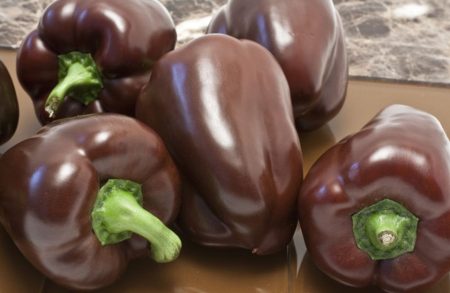
Bagheera
A popular variety that ripens in the medium term, it is appreciated for its excellent immunity to all possible negative factors. Bagiru is grown in various greenhouses and on the street, in the open. The bush is easy to care for, its height does not exceed 50 cm, and it is very neat.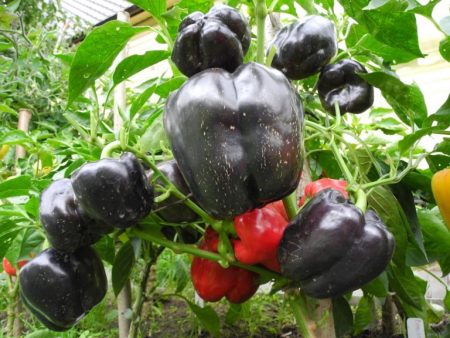
Cuboid, thick-walled peppers have a drooping arrangement, they are chocolate-red with a purple hue weighing from 200 to 350 grams. The skin is tough, the pulp, although dense, but very juicy, with a pleasant consistency. The taste is sweet, the aroma is bright, saturated. About one kilogram of peppers are collected per square meter.
Rules for growing purple pepper
Generally speaking, the process of growing purple pepper is no different from cultivating varieties with red, yellow, or green fruits. Everything is standard here - seed preparation, sowing, seedling cultivation.
But there is a very important point that puts purple pepper one step higher than the rest - resistance to lower temperatures. Judging by the reviews of gardeners, varieties of heat-loving culture with fruits of an unusual color are really easy to grow in cool regions with unstable weather.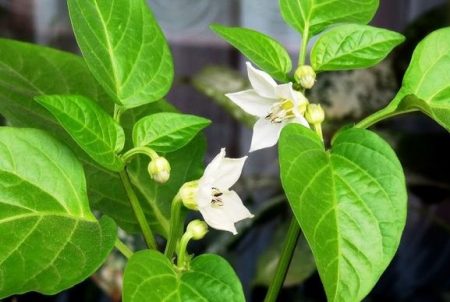
Landing in open ground is carried out after return frosts when a stable positive temperature is established (above 15 degrees). Purple peppers are planted in greenhouses at the time calculated when sowing, it all depends on the type of construction. Plant care consists of watering, fertilizing and removing weeds from the beds. Tall peppers form and tie up.
Thanks to the painstaking work of breeders, gardeners from areas with unfavorable weather for cultivating heat-loving crops can plant pepper even in open ground. All the varieties described are unpretentious, the fruits are useful and universal in use, and most importantly, they give very good yields.
Reviews
Alyona. The Bagiri variety deserves special attention; I have been growing it for several years. It is very tasty, eat it fresh, freeze, dry and harvest for the winter. I advise him to everyone, gave seeds to neighbors, also appreciated.I live in a region where sharp temperature changes are considered the norm, I plant peppers in the open ground, there are no problems, the harvest is excellent from year to year.
Fedor. I want to praise the varieties Blot and Star of the East. They are unpretentious, give a good harvest and are not susceptible to various diseases. All possible advantages, of course, are noticeable only with proper care. I recommend these purple peppers to everyone. The fact that the fruits lose their color during processing does not scare, we can preserve them with pleasure. You need to try other varieties.




 Calorie pepper stuffed with meat and rice - BZHU per 100 grams
Calorie pepper stuffed with meat and rice - BZHU per 100 grams Gorky pepper - the best varieties for open ground
Gorky pepper - the best varieties for open ground Hot pepper seeds - the best varieties for open ground and reviews
Hot pepper seeds - the best varieties for open ground and reviews Capsicum tincture for hair - how to use and reviews
Capsicum tincture for hair - how to use and reviews